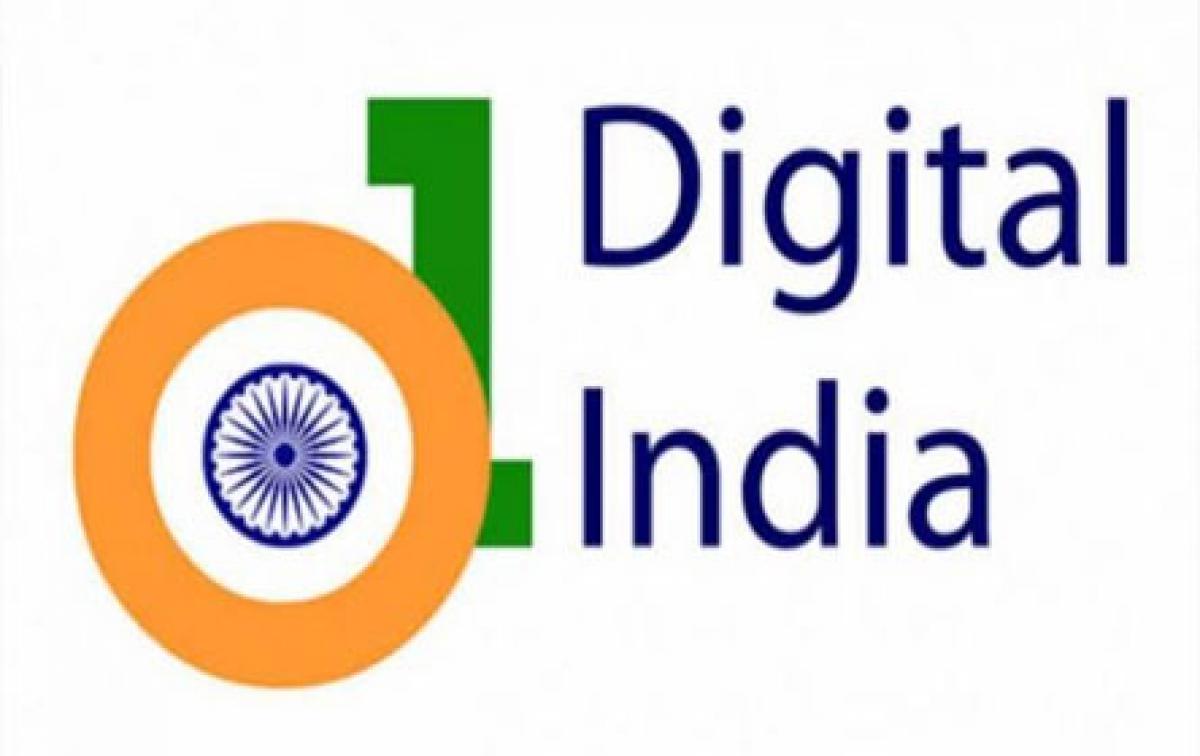Live
- MP's Gita recitation programme finds place in Guinness World Records
- Pawan Kalyan Shines Globally as 2nd Most Googled Actor of 2024 Amid Busy Film, Political Career
- Disruptor of House is the chairman himself: Cong and INDIA bloc’s pointed remarks on No-trust notice
- IIIT-Bangalore to host computer vision conference ICVGIP 2024
- F1: Fernando Alonso ‘still dreaming’ of third world championship
- WI vs Bangladesh Watch Controversial Banter Between Shakib and King
- EFLU Celebrates Bharatiya Bhasha Diwas
- Manchu Manoj Submits Bond of Rs. 1 Lakh to Rachakonda Commissioner
- Cuba denounces US 'theft' of Havana Club rum trademark
- Places of Worship Act: Mathura Shahi Eidgah mosque files intervention application in SC
Just In

x
Highlights
Even as disruptive technologies rolled out game-changing products and software majors vied for more outsourcing, the start-up revolution and the government\'s Digital India initiative dominated the Indian IT industry landscape in 2015.
Bengaluru: Even as disruptive technologies rolled out game-changing products and software majors vied for more outsourcing, the start-up revolution and the government's Digital India initiative dominated the Indian IT industry landscape in 2015.
The software services and product-driven industry have been on track this year to register again a double digit (12-14 percent) growth in fiscal 2015-16. But the surge in start-ups and the Digital India plan have redefined the rules of the game," industry body Nasscom president R. Chandrashekhar told IANS here.
If convergence of information and communication technologies (ICT) spawned new platforms for vendors to offer more products and cloud-based services, techno-geeks and young entrepreneurs joined the party by developing a host of applications (apps) for enterprises and diverse industry verticals.
The National Association of Software Services and Companies (Nasscom) had initiated an ambitious programme in 2013 to incubate about 10,000 domain-specific start-ups across the country by 2020 for rolling out software products, solutions and apps for individual and enterprise users in India and the world over.
With Bengaluru emerging again as the country's start-up capital, thanks to the ecosystem this tech hub had built over the years, the tech-savvy Karnataka government has declared a start-up policy and set up two warehouses in the city in partnership with Nasscom to promote and incubate hundreds of them.
"If the Digital India initiative takes off, the start-up ecosystem will thrive with over 100,000 new-age firms in the next 10 years, employing 3.5 million people and targeting a value of $500 billion," former Infosys director and Manipal Global Education Services chairman T.V. Mohandas Pai told IANS.
Though Pai believes that only 10 percent of the start-ups would succeed, indicating a very high failure rate, they will be a major source of job creation, investments and new apps.
"The government has a key role in facilitating growth of start-ups and in making them open, operate and shut down in case of failure, as many of them fail as elsewhere in the world," Chandrashekhar observed.
According to Nasscom, about 18,000 start-ups, with a combined valuation of $75 billion, employ around 300,000 across the country.
"The ecosystem has the potential to grow by 10-fold in the next 10 years, with the valuation going up to $500 billion," Pai noted.
"Digital India will not only benefit traditional and established players but also thousands of new-age firms, especially start-ups across the country, as the ambitious programme envisages a whopping Rs.4.5 lakh crore ($68 billion) investments over the next decade," Chandrashekhar asserted.
As ICT became pervasive, connecting devices and people, industry players have invested substantially during the year on developing new platforms and hiring more techies to serve their clients worldwide and in India.
"We also see a huge potential for our industry from the government's Make in India programme, as manufacturing of industrial, consumer and electronics goods will require ICT solutions to operate and deliver them," said Krishna Prasad, an independent software developer for vendors.
On the software services front, IT bellwethers Tata Consultancy Services (TCS), Cognizant, Infosys, Wipro and HCL were able to grow their revenue by 5-10 percent year-on-year despite the global technology spend declining in 2015.
"We expect the industry to add $20 billion in FY 2016 to the overall revenues of $146 billion in FY 2015, as the industry's performance has been in line with the expectations we had set at our strategic review," Chandrashekhar said.
According to a Nasscom projection, IT exports will grow 12-14 percent to reach $110-112 billion and the domestic market by 15-17 percent to touch $55-57 billion by March 31, 2016.
Currency volatility, however, impacted the operating margins of exporting firms, including the global software majors.
"The export growth rate continues in double-digits as in 2014, though firms are under pressure to deliver more value in terms of business and transformation," Chandrashekhar affirmed.
On the outlook for the industry in 2016, the former telecom secretary-turned industry representative said the projection for 2016-17 would be revealed in February and the growth would be on track as in 2015.
Highlights:
* Start-ups and Digital India dominated IT industry landscape
* Software services and exports to post 12-14 percent growth
* Geeks develop new applications for internet users & verticals
* Nasscom to incubate 10,000 starts-ups by 2020
* Karnataka declares start-up policy, sets up two warehouses
* Digital India will trigger start-up boom and create jobs
* Start-ups are risk prone and many are bound to fail
* Digital India to benefit traditional and new-age companies
* IT bellwethers spur export growth despite cuts in tech spend
* Currency volatility impacts operating margins of export firms

Next Story
More Stories
ADVERTISEMENT
© 2024 Hyderabad Media House Limited/The Hans India. All rights reserved. Powered by hocalwire.com







